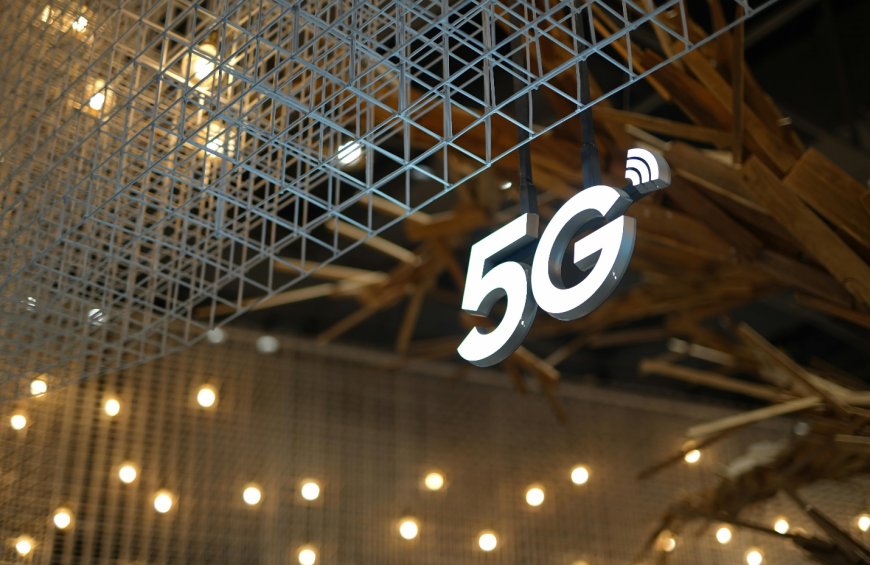5G Connectivity: What to Expect in 2025

The transforming ability of 5G technology has become a pillar of global connectivity as we advance into 2025. With its ultra-fast speeds, low latency, and capacity to connect billions of devices concurrently, 5G is transforming sectors, improving daily life, and setting the foundation for the next developments. This paper investigates the advantages of 5G and their possible uses in several industries, so highlighting why this technology is more than just a development.
The Core Benefits of 5G Technology
5G technology offers several key advantages over its predecessors, making it a game-changer in connectivity:
1. Faster Speeds: 5G is up to 100 times faster than 4G given download speeds of up to 10 Gbps. Faster file transfers, flawless streaming of high-quality content, and better user experiences all follow from this.
2. Low Latency: Under one millisecond on 4G, reduced latency helps to enable real-time communication and responsiveness by comparison to 30 milliseconds. For uses like remote surgery and autonomous cars, this is vital.
3. Massive Device Connectivity: Perfect for Internet of Things (IoT) uses including smart cities and industrial automation, 5G can support up to one million devices per square kilometer.
4. Improved Reliability: Enhanced network stability ensures uninterrupted connectivity for critical operations across industries.
Applications for 5G in Various Industries
The importance of 5G technology has unlocked new possibilities across multiple sectors. Here are some of the most impactful applications:
1. Healthcare
The healthcare industry has embraced 5G to revolutionize patient care:
1. Telemedicine: Real-time remote consultations are becoming more reliable, by enabling doctors to diagnose and treat their patients from anywhere all over the world.
2. Remote Surgery: Surgeons can now perform operations remotely with precision because of low-latency connections that transmit track feedback in real-time.
3. AI Diagnostics: High-speed data transfer can be facilitated by the use of AI-powered tools for analyzing large medical imaging files like MRIs and CT scans and also improve diagnostic accuracy.
2. Manufacturing
Manufacturing has entered a new era with Industry 4.0 by the power of 5G:
1. Smart Factories: Automated systems and IoT-enabled devices communicate simultaneously to optimize production processes and reduce errors.
2. Predictive Maintenance: Sensors that are connected via 5G monitor equipment health in real-time, preventing costly breakdowns through predictive analytics.
3. Robotics: Advanced robotics controlled through low-latency networks enhance precision and efficiency on factory floors.
3. Transportation
The transportation sector is using 5G to improve safety and efficiency:
1. Autonomous Vehicles: Self-driving cars can rely on real-time data exchange by enabling 5G to navigate roads safely and make split-second decisions.
2. Smart Traffic Management: Infrastructure like traffic lights and sensors optimizes traffic flow, reducing congestion and emissions.
3. Connected Travel: Passengers enjoy enhanced infotainment options and seamless connectivity during their journeys.
4. Entertainment
Entertainment experiences have been transformed by the capabilities of 5G:
1. Augmented Reality (AR) and Virtual Reality (VR): Gaming, virtual concerts, and interactive experiences are now possible with ultra-low latency connections.
2. High-Resolution Streaming: Streaming services can deliver smooth 4K and even 8K content without buffering delays.
3. Tactile Internet: The ability to transmit touch sensations over the Internet opens up new possibilities for gaming and remote interactions.
5. Agriculture
In agriculture, 5G is driving efficiency through smart farming solutions:
1. Precision Agriculture: Sensors monitor soil conditions, weather patterns, and crop health in real time, helping farmers make data-driven decisions.
2. Autonomous Machinery: Drones and self-driving tractors powered by 5G automate tasks like planting, irrigation, and harvesting.
3. Resource Optimization: Connected systems ensure efficient use of water, fertilizers, and other resources, boosting sustainability.
6. Smart Cities
Urban areas are becoming smarter with the integration of 5G technology:
1. Connected Infrastructure: Systems like energy grids, water supply networks, and waste management operate more efficiently through real-time data sharing.
2. Public Safety: High-speed networks support surveillance systems and emergency response coordination for safer communities.
3. Enhanced Mobility: Public transportation systems benefit from real-time tracking and predictive maintenance enabled by IoT devices connected via 5G.
Economic Impact of 5G
5G has a shockingly great economic promise. By allowing better operations in sectors including manufacturing, healthcare, retail, and construction, it is expected to create $13.2 trillion in worldwide sales activity by 2035. As smart factories proliferate, manufacturing alone is expected to bring in $4.7 trillion of income.
Through private 5G networks that provide safe connections catered to needs, companies can also cut running expenses. These systems help businesses to control their infrastructure and effectively manage data flow.
Challenges Ahead
While the benefits of 5G are undeniable, some challenges must be addressed:
1. Infrastructure Deployment: Building the dense network infrastructure required for widespread coverage remains a significant hurdle.
2. Cost Barriers: The high cost of adopting 5G technology may delay its implementation in developing regions.
3. Security Concerns: As more devices connect to the network, ensuring robust cybersecurity measures becomes increasingly critical.
Looking Ahead
Over 1.2 billion devices globally will be connected via 5G networks by 2025, evidence of its quick acceptance. Still, the path does not stop here. Next-generation technologies, including 6G, which promise even faster speeds and more intelligence, are already under investigation by researchers.
Right now, though, the emphasis still is on realizing 5G's full capability. From transforming sectors to raising the quality of life via smart cities and improved healthcare access, this technology must define our digital future.
As we welcome this era of hyper-connectivity in 2025, it is abundantly evident that the issue is not only about how quickly we can link but also about how meaningfully we can exploit this connectivity to inspire innovation and produce long-lasting influence all around society.
What's Your Reaction?
 Like
0
Like
0
 Dislike
0
Dislike
0
 Love
0
Love
0
 Funny
0
Funny
0
 Angry
0
Angry
0
 Sad
0
Sad
0
 Wow
0
Wow
0



































